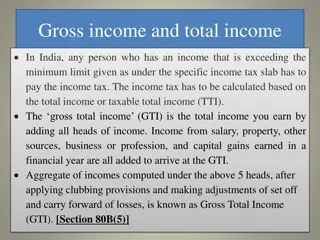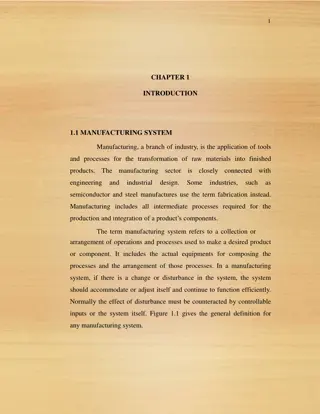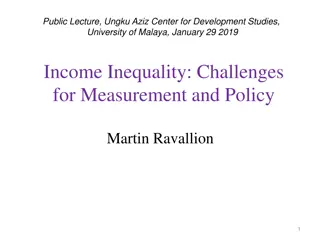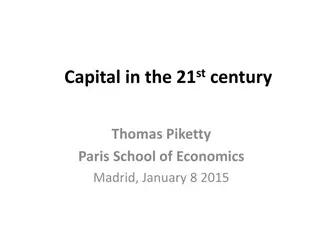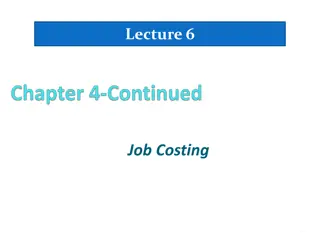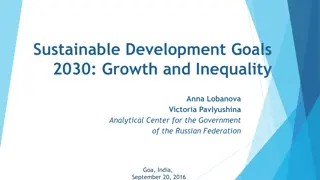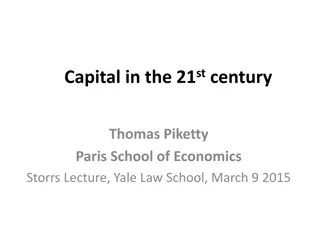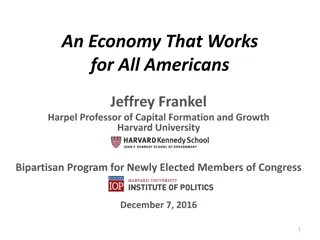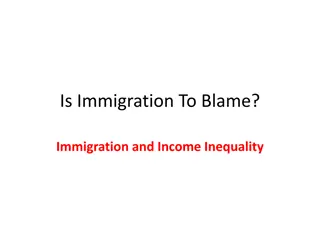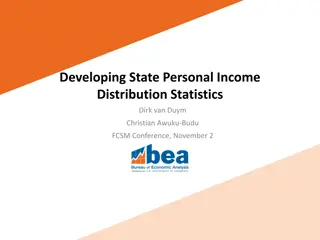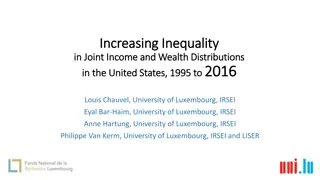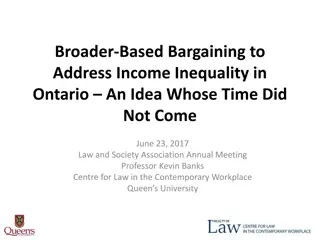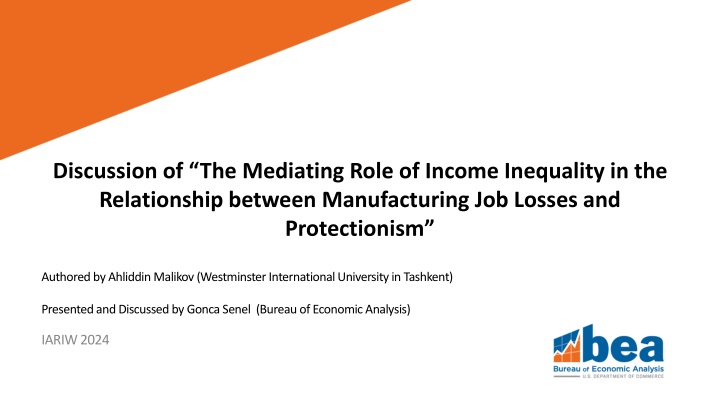
Role of Income Inequality in Manufacturing Job Losses
This study examines the mediating role of income inequality in the relationship between manufacturing job losses and protectionism. It delves into how trade liberalization impacts income distribution and the subsequent rise in protectionist sentiments.
Download Presentation

Please find below an Image/Link to download the presentation.
The content on the website is provided AS IS for your information and personal use only. It may not be sold, licensed, or shared on other websites without obtaining consent from the author. If you encounter any issues during the download, it is possible that the publisher has removed the file from their server.
You are allowed to download the files provided on this website for personal or commercial use, subject to the condition that they are used lawfully. All files are the property of their respective owners.
The content on the website is provided AS IS for your information and personal use only. It may not be sold, licensed, or shared on other websites without obtaining consent from the author.
E N D
Presentation Transcript
Discussion of The Mediating Role of Income Inequality in the Relationship between Manufacturing Job Losses and Protectionism Authored by Ahliddin Malikov (Westminster International University in Tashkent) Presented and Discussed by Gonca Senel (Bureau of Economic Analysis) IARIW 2024
Disclaimer: The views in this presentation reflect those of the author and not necessarily those of the Department of Commerce or the Bureau of Economic Analysis.
Background (from Malikov (2024)) In the last few decades, almost all economies experienced rapid acceleration in the globalization process, characterized by significant growth in cross-border trade, international financial flows, and migration. The paper states that trade liberalization has been empirically demonstrated to produce economic benefits for all participating countries at the aggregate. o However, it is also stated that benefits are not equally distributed at the household level as the trade-induced competition tends to favor relatively high-skilled workers in import-competing industries, particularly in the manufacturing sector. This paper argues that distributional consequences of trade liberalization have important implications for domestic political economies for two reasons: o First, greater trade openness inevitably leads to higher overall income inequality, which is fundamentally a political issue. o Second, post-trade-liberalization job losses and subsequent increase in income inequality provide fertile ground for protectionist agendas. 3 3/13/2025
Idea (from Malikov (2024)) In this paper, the author claims that the root causes of protectionism lie deep within economic insecurities as explained below: Jobs in the manufacturing sector are particularly vulnerable to the expansion of global trade, as it hurts o low-skilled workers in import-competing industries and making them receptive to the messages of protectionist agendas. Therefore, the decline in the share of manufacturing in total employment is conducive to protectionism, o and this relationship is mediated by income inequality. 4 3/13/2025
Idea (from Malikov (2024)) In short, the paper analyzes the effect of manufacturing job losses on protectionist trade policies through income inequality. 5 3/13/2025
Methodology and Data (from Malikov (2024)) The paper uses fixed and random effects model for estimating the effect of manufacturing job losses and the mediating effect of income inequality on weighted average of tariff rates applied for all products. ??????? ???????,?= ?0+?1?????_?????,?+?2?????,?+ ?????????,?+??,? . The dependent variable weighted average of tariff rates applied for all products from the World Bank. The data on the standardized Gini index are obtained from the latest version of the UNU-WIDER World Income Inequality Database (WIID). Manufacturing employment as a proportion of total employment, which is collected from ILO, is used as a proxy for the share of manufacturing jobs. GDP per capita and current account balance as percentage of GDP are used as control variables. SEM and GSEM structural equation models are used to estimate the mediating effect of Gini coefficient on the relationship between manufacturing jobs and the weighted average of tariff rates applied for all products. 6 8/9/2024
Results (from Malikov (2024)) 7 3/13/2025
Results (from Malikov (2024)) 8 3/13/2025
Results (from Malikov (2024)) 9 3/13/2025
Results (from Malikov (2024)) 10 3/13/2025
Results (from Malikov (2024)) Baseline random effects show that the proportion of manufacturing in total employment negatively affects the tariff rates, suggesting that job losses in manufacturing sector can trigger protectionist policies in democracies. o However, when the Gini coefficient was added to the regression as a measurement of income inequality, the effect of the share of manufacturing in total employment became insignificant, which provides support for the existence of a mediating role of income inequality in this relationship. These results are valid for democratic countries only. The same regression model for non-democratic countries suggests that there is no direct or mediated (through income inequality) effect of manufacturing job losses on tariff rates. The second part of the mediation analysis indicates that there is a negative and significant relationship between the share of manufacturing in total employment and income inequality. Overall, this study finds that countries often impose higher average tariff rates as manufacturing employment shrinks. Another finding of the paper is that Gini coefficient mediates this relationship, concluding that the negative effects of manufacturing job losses on income inequality can incentivize the policy makers to implement protectionist policies as a reaction 11 3/13/2025
Discussion Important to understand the relationship between the decline in manufacturing employment and the trade patterns. Discussion Points o Time frame needs to be clarified o The results may be driven by the US: Novta and Pegucheva (2019) o Inequality due to trade vs technological advancements o Use of European Union dummy => Keep them as one single country o Use of dummies for free trade areas o Use of an index (rather than grouping) for democracy and interaction with the explanatory variables o Total trade or imports as a share of GDP, not the current account to capture how important imports are o Control for the share of the manufacturing sector that is tradeable o Use of lagged values to control for the policy implementation 12 3/13/2025
Conclusion Interesting research on the effect of manufacturing sector on the trade policies through the mediating impact of income inequality. Similar studies can also shed light on other policy decisions like immigration, state-level technology adoption incentives etc. Looking forward to the next version! 13 3/13/2025


